Parramatta, 31 October 1816
The Family Idols of Pomare
image from the cover of Missionary Sketches no. 3, October 1818.
William Ellis was only twenty-one years old when he arrived at Port Jackson, Australia, in late July 1816. He had left England on a Sunday morning, six months earlier, along with 187 convicts, a third of whom were younger than he was.
Ellis had been a junior gardener when he read the letters sent by his pastor, John Campbell, from South Africa. Yearning to become a missionary, he trained for a year, was ordained and then married – the risks of sending unmarried missionaries into the world having now been recognised.
Mary Mercy Moor, his wife, had been orphaned as a child but was inspired to become a missionary after hearing Campbell speak about his journey in London. As a young woman, however, the only way viable way to embark on a life as a missionary in 1815 was as a missionary wife.1
The voyage took the pair via Rio de Janeiro, where they arrived at the same time as a slave ship from Africa, its deck crowded with people of a similar age. But William and Mary were not slaves or convicts, and their journey marked the commencement of another sort of life.
Waiting in New South Wales for onward transport to Tahiti, they stayed at Parramatta with the Hassells, the original missionary family depicted in the Cession of Matavai, who had left Tahiti in 1798.2
It was here that they would have heard of the arrival in Sydney harbour of the Queen Charlotte, a ship that traded with the islands, until recently captained by William Shelley, another former missionary from the first Duff voyage.3
Alongside sandalwood and pork, another, extremely unusual, cargo was unloaded – ‘nailed up in a case’ by missionaries at Tahiti. It was addressed to Joseph Hardcastle, Treasurer of the Missionary Society in London, and was making William and Mary’s journey in reverse.
William Ellis
image published as frontispiece in William Ellis’ 1827 Narrative of a Tour Through Hawaii
We have to imagine the wooden packing case being carried into the Parramatta home of Samuel Marsden, the penal colony’s senior churchman, who two years previously had begun a mission to New Zealand under the aegis of the Anglican Church Missionary Society. We don’t know who pulled the nails out of the case, but it is likely to have been one of the many convicts who worked for Marsden, herding sheep on the thousands of acres of Australian bush, granted to Marsden by the governor.
William and Mary Ellis had likely gazed up at Campbell’s giraffe in the newly opened Missionary Museum in London a year before, but the artefacts revealed in Parramatta – carved from wood and whale bone and bound with colourful feathers – were unlike any they had seen. In a letter to Hardcastle, dated 31 October 1816, Marsden described them as ‘THE IDOL GODS OF OTAHEITE’:
They are now lying prostrate on the table before me; and were we not certain of the fact, we could not believe that any human beings could place their salvation in these wretched images, and offer up human sacrifices to avert their anger.4
Whether this Halloween display was deliberate on Marsden’s part is hard to know from a distance of two centuries, but the date’s significance could not have been lost on the many Irish rebels transported to the penal colony. How the superstitious sailors of the Willerby, the ship on which Marsden forwarded the case to London, regarded these ‘idol gods’ can only be imagined, but when the ship was wrecked off Ambon Island, in what is now Indonesia, there must have been some who blamed this ominous cargo.5
News of these ‘Idol Gods’ reached London in early 1818. An announcement in February’s Evangelical Magazine and Missionary Chronicle stated that they ‘will enrich the Museum of the Society, and we shall probably give a print of them in a future number of this work’.6
In April the Missionary Society initiated a new quarterly publication, Missionary Sketches, for the use of weekly and monthly contributors to the Missionary Society. Each issue consisted of a single folded sheet, the front cover given over to a large printed illustration.
Unfortunately, the first issue had to report that the ‘Idol Gods’ had still not arrived, but that ‘correct sketches’ of them would be presented to readers if they did. As a result, the cover showed an ancient Trimurti sculpture from the Elephanta caves in Mumbai Harbour, India, with Brahma, Shiva and Vishnu presented as a three-headed being, suggestive of the form of the Christian Trinity.7
When the ‘Idol Gods’ still hadn’t arrived by May, readers of the Missionary Chronicle were notified ‘in order to prevent unnecessary trouble and disappointment’ – presumably anticipating the arrival of missionary supporters from around the country for the Society’s 24th annual general meeting in London.
In the sermon that opened this meeting, the Rev Ralph Wardlaw from Glasgow preached on a verse from Acts xvii 16:
Now, while Paul waited for them at Athens, his spirit was stirred in him, when he saw the city wholly given to idolatry.
Wardlaw proposed that ‘the contemplation of the idolatries of the Heathen’ should keep alive and stimulate the missionary spirit, inspiring indignant grief at the dishonour done to God, amazement at human weakness, abhorrence of human impiety, as well as compassion for human wretchedness.
His sermon, however, cautioned his listeners not to be complacent, since ‘the guilt of idolatry… attaches itself to many who little imagine that they are at all chargeable with any thing of the kind’.8
It was at the Society’s business meeting the following day that it was proposed and agreed that the official name of the Society would become the London Missionary Society, a move which made sense given the establishment of the Society’s headquarters and museum in the city, three years earlier.
In July, the front page of the second issue of Missionary Sketches was taken up by an image of Mantis, the Soothsayer, or the Hottentot’s God, based on the preserved specimen sent to Missionary Museum in 1816 by the Rev. George Thom from South Africa.9In August, the same appeared in the Missionary Chronicle.10
Finally, in September, the Missionary Chronicle announced that ‘the long-expected Idols… are at length arrived in London’11 – how they escaped the wreck of the Willerby was not reported, but they must have been rescued by the surgeon, Mr Hill, to whom Marsden had entrusted them.
In the third issue of Missionary Sketches, published in October 1818, the image given at the beginning of this chapter finally appeared, alongside a description of ten ‘Idols’, under the title The family Idols of Pomare, which he relinquished, and sent to the Missionaries at Eimeo, either to be burnt, or sent to the Society.12
In December 1818, the same image featured in the Missionary Chronicle alongside shorter descriptions – an image of conversion to rival that of Mary, John and Martha fifteen years earlier.13
How was it that these ‘idol gods’ were given up by Tu (Pomare II), the ‘young king’ depicted on sitting on another man’s shoulders in the Cession of Matavai? How had the Society’s first mission gone from abject disaster to such conspicuous success in less than two decades?
For evangelicals at the time, the answer was divine Grace – a missionary hymn sung soon after their arrival in England provides an insight, associating the renunciation of idols with the power and grace of ‘Britain’s God… by British Christians taught’.14
Image of the Family Idols of Pomare
Published in the Missionary Chronicle, December 1818, p. 559
From our perspective, two centuries later, however, it seems necessary to attempt to understand something of what had happened in Tahiti during those two decades, and the motivations that guided Pomare’s actions.
The exodus of missionaries from Tahiti in March 1798 had been prompted by a conflict with Tu, the young king who became Pomare II. He had been upset when missionaries tried to prevent a visiting ship supplying him with guns and powder and had a number of them publicly stripped.
Shortly afterwards Tu’s father, Pomare I, under whose protection the remaining seven missionaries placed themselves, tried to enlist their support in his military efforts.
Politically, the situation at Tahiti was unstable, with conflict emerging between father and son. In November 1798, when Tu supported the execution of his ally, the priest Ha’amanamani who had arranged the settlement of missionaries at Matavai a year before, it was recorded of Tu in the missionary journal that:
We believe he is capable of committing any wickedness the devil, his carnal mind, and bloodthirsty followers may excite him to, if God did not restrain him.15
In January 1800, much to the disapproval of the missionaries, his father, Pomare I, acquired a ‘a carronade, two swivels, several muskets and a great deal of ammunition’ from a visiting ship, from which four sailors also deserted to assist him.16
In July 1801, the mission was reinforced with eight new missionaries as well as one who had previously been at Tonga, arriving with a fresh supply of stores.
In 1802, Henry Nott, a bricklayer had remained at Tahiti since the arrival of the Duff in 1797, began preaching around the island, having developed sufficient command of Tahitian. It was during his preaching tour that Nott visited the marae or sacred place of Oro the god of war at Atahuru.
Here, Tu seized the to’o or representation of the God, described by the missionaries as a ‘billet of wood’, initiating a conflict that pitted him once more against his father.
Conflict and violence spiralled across the island, accompanied by death and disease, and it was at around this time that Tu began to show an interest in missionary’ preaching.
Portrait of King Pomare II
Stipple engraving by Samuel Freeman. Published in May 1821 by F. Westley, Stationer’s Court
The marae at Pare, looking towards Matavai, Tahiti in 1792
Watercolour by Lieut. George Tobin
Mitchell Library, State Library of New South Wales: FL1606998
Many Tahitians blamed the increasingly dire situation on the arrival of Europeans, connecting the political expansionism of Pomare I and Tu to their alliances with Europeans over the previous four decades. These included deploying the military expertise of mutineers from the Bounty during the late 1780s to establish their preeminence. The missionaries, however, understood their suffering as God’s judgement for the impieties of the Tahitians.
In September 1803 Pomare I died, changing the calculus of Tahitian politics.
Adopting the name Pomare II, Tu consolidated his position with advice from a Hawaiian courtier, recently returned from Europe. He began learning to read and write and attempted to persuade the missionaries not to teach these skills to other Tahitians.
In July 1805, Pomare began writing directly to the Directors of the Missionary Society in London, receiving a response in late 1806. In his subsequent reply, dated 1 January 1807, Pomare II sought to deepen his relationship with the directors, praising Jehovah and agreeing to ‘banish Oro, and send him to Raiatea’, the island from which the cult of the war god had come, and which remained its spiritual centre. In return, Pomare II asked for ‘property and cloth as well as muskets, powder, paper, ink and pens, as well as ‘all the curious things that you have in England’.17
Map of French Polynesia
Showing locations of Tahiti, Moorea, Huahine & Raiatea
Thanks to dc3airways.net
Towards the end of 1808, discontent with Pomare II and his close alliance with the missionaries initiated a rebellion, as a result of which all but four of the unmarried missionaries left Tahiti for the island of Huahine. The culmination of the conflict was a major battle on 22 December 1808 that saw Pomare II and his allies defeated, despite a prophet of Oro promising them victory.
The rebels ravaged Matavai, from where Pomare II and the remaining missionaries fled to the neighbouring island of Moorea. From there, all the missionaries except Henry Nott went to Huahine, and in October 1809 all but one left for Australia.
Disillusioned with Oro, Pomare II spent a great deal of time reading and thinking, developing a deeper interest in the God of the missionaries through the counsel of Henry Nott. He told Nott in July 1812 that he wanted to be baptised and when questioned on the sincerity of his commitment, Pomare II stated that ‘You do not know the thoughts of my heart, nor I yours, but God does’.18
In August 1813 Pomare returned to Tahiti to reassert his authority – the missionaries worried that he would be exposed to alcohol and its attendant temptations. Nevertheless, his renunciation of ‘the idol gods and the religion of his country’ impressed the missionaries.
Visiting Tahiti, they discovered a prayer-meeting had been instituted with the names of the Pure Atua – praying people – recorded in a book. By the end of 1814 this included 204 names. In January 1815 the missionaries wrote to London, concerned that Pomare wanted to be the first Christian to be baptised among his people, while remaining, according to them, ‘a slave to drinking’.19
Cover of Missionary Sketches 6
Destruction of the Idols at Otaheite; pulling down a Pagan Altar, and building a Christian Church.
Published in July 1819, the image is an imagined scene, based on the watercolour by Tobin, above, completed before the arrival of missionaries – depicted here overseeing the construction of a church.
In February 1815, the priest of Papetoai in Moorea, a man named Patii, hit upon a way to convince the missionaries of the true renunciation of the old gods. He took the to’o, or God images, from the marae and created a pyre on the beach. Reciting their names and pedigrees, he stripped them f their coconut fibre wrapping and feathers one by one before casting them into the fire.
This action initiated an outburst of iconoclasm that spread rapidly across both Moorea and Tahiti, with Pomare encouraging people to join this festival of flames.
An attempt to kill the Pure Atua (praying people) of Tahiti saw them flee once more to Moorea, but they subsequently returned to Tahiti with Pomare II at their head. A battle on 12 November 1815, when the Christians were attacked at church, proved decisive.
Whether the events in Tahiti during 1815 were related to the eruption of Mount Tambora, a volcano on the Indonesian island of Sumbawa, on 10 April is unclear from missionary accounts. However, this was one of the largest volcanic events ever recorded and atmospheric ash generated brilliantly coloured sunsets all over the world for months. How these portents were regarded in Tahiti can only be imagined.
Pomare’s restraint in exerting retribution following his victory, including offering respectful burial to enemies killed in battle, seems to have persuaded his erstwhile enemies to accept his overlordship as a Christian king. Following the victory, Pomare set about destroying ‘gods’ and maraes, but also building churches as new places of worship.
The picture that emerges is one of religious and societal transformation in which European missionaries, even by their own admission, were not the principal actors – for most of the key events on Tahiti itself, the missionaries remained in a peripheral location on the island of Moorea, hearing news of what unfolded second-hand.
It was here that they were sent the ‘family idols’ by Pomare II, together with his letter of explanation, dated February 19, 1816. A missionary translation printed in the Missionary Chronicle for January 1818 renders the letter:
Friends,
May you be saved by Jehovah and Jesus Christ our Saviour. This is my speech to you, my friends. I wish you to send those Idols to Britane for the Missionary Society, that they may know the likeness of the gods that Tahiti worshipped. These were my own idols, belonging to our family from the time of Taaroamanahune even to Vairaatoa (Pomare I); and when he died he left them to me. And now, having been made acquainted with the true God, with Jehovah, He is my God, and when this body of mine shall be dissolved in death, may the Three-One save me!
….The principal idol, that has the red feathers of the Otuu is Temeharo, that is his name, look you, you may know it by the red feathers; that was Vairaatoa’s own god, and those feathers were from the ship of Lieutenant Watts (Lady Penrhyn, 1788); it was Vairaatoa that set them himself about the idol. If you think proper, you may burn them all in the fire; or, if you like, send them to your country, for the inspection of the people of Europe, that they may satisfy their curiosity, and know Tahiti’s foolish gods!…Let me know also, what news there may be from Europe and from Port Jackson. Perhaps King George may be dead, let me know. I shall not go around Tahiti before the month of March. May you be saved, my friends, by Jehovah, and Jesus Christ the only Saviour by whom we sinners can be saved.
POMARE, King of Tahiti, &c. *C.
Tahiti Motuta, Feb 19. 1816.
Could Pomare II have been responding to the appeal for ‘curious articles’ for the Missionary Museum printed the April 1815 Missionary Chronicle? It is tempting to read his reference to ‘curiosity’ as an echo of the Chronicle’s language.
William Ellis, after he had arrived at Tahiti, recorded in his diary for 26 April 1817 that Pomare had been ‘much pleased with the portraits in the Evangelical Magazine, and some prints of Natural History’, so it is not impossible that Pomare would have seen the Missionary Chronicle.21
However, a journal of the Tahiti mission records that magazines arrived from England on 29 December 1815, but none dated later than the beginning of January 1814, which makes it unlikely Pomare would have seen the appeal for the new Missionary Museum.22
Earlier in the year, however, on 6 May 1815, the Queen Charlotte had arrived at Moorea with letters dated between December 1813 and July 1814. In the Missionary Chronicle of May 1814 a notice had appeared noting the arrival of ‘specimens of idols… especially from China’, which expressed an intention on the part of the Society to exhibit them to their friends:
not merely to gratify curiosity, but to excite their pity, their prayers, and their exertions in behalf of millions of their fellow-creatures, sitting in the region of the shadow of death. 23
While it is possible Pomare may have seen this, it probably makes most sense to understand Pomare’s despatch of the idols as part of his ongoing attempt to convince the missionaries of the sincerity of his conversion.
In addition, he clearly wanted to develop a relationship of exchange directly with the centre of missionary power in London, rather than with missionary proxies in Tahiti – his Hawaiian advisor with experience of London presumably gave Pomare an important insight into the real locus of British power.
Pomare’s strategy was successful, resulting in a correspondence with Rev. Dr. Haweis, initiator of the mission to Tahiti. Writing in October 1818, just after his family idols finally reached London, Pomare thanked Haweis for his letter of August 1817 and the gift of books, as well as an earlier gift of a pocket watch.
Pomare explained that a local Missionary Society had been established in Tahiti to collect coconut oil, pork, arrow-root and cotton as missionary tribute, informing Haweis that he had decided to name a ship he had built at Tahiti after him. He also stated:
I have sent you the evil spirits (idols) which you sent to me for. All the large idols are consumed, having been burned in the fire. This is only a little one that remains. The name of the little idol is Taroa.
I also send you two little fans which the Royal Family of these countries were accustomed to fan themselves with. When the day of the festival arrived, and the King was prayed for, those were the fans they used to fan away the flies. This was an established custom among the princes in former times. The name of those fans is Nunaachau. They fastened them to the handle, and this used them to drive away the flies. What am I to do with the little pearl box, which was enclosed in the parcel which you sent me? Had it been directed to me, it would have been right; but there is another name on it, that of the Queen of Lattakkoo; that is the reason I inform you of it. I have sent back the little pearl box to Mr Marsden at Port Jackson, that he may return it to you. If you write to me again I shall be glad. If it be agreeable, send me three books: one very large bible: one good portable one, very small; and one book of geography.
If it be not agreeable, very well, do not think evil of me, dear friend, for the small request that I make in the conclusion of my letter. We are well; and I shall be glad to hear that you are well also.
May you be blessed by Jesus Christ, the true King of Salvation, by whom we must all be saved.POMARE24
If Pomare’s ‘Family Idols’ were his response to a divine Gift of Grace, he clearly didn’t anticipate the exchange ending there, and his early requests for guns and powder were now converted into requests for books and knowledge – sending Pomare the books he requested was one of Haweis’ very last acts on earth.25
It is easy to see how the evangelical theology of Grace, freely given by God though the sacrifice of Christ could be understand in relation to a Polynesian theology of mana – divine and ancestral power – concentrated in to’o and acquired through sacrifice and participation in ceremonies. What need had Pomare for older to’o if he could access mana through the word of God, concentrated in the textual form of the bible and other books?
As a wave of conversion enveloped Tahiti and the surrounding islands, the need for missionaries and bibles became increasingly urgent. On 13 February 1817, William Ellis finally arrived at Moorea, bringing with him a technology that would prove central to the spread of Christianity across the Pacific – a printing press. On 30 June 1817, Ellis looked on as Pomare printed the very first page of a Tahitian spelling book.
On 25 August 1819 the Rev. Rowland Hill, a founder and Director of the London Missionary Society addressed a Missionary Festival in Cornwall, gathered at the Independent Chapel in Falmouth. According to a report in the Missionary Chronicle:
Before the meeting closed the principal idol of Pomare’s family was conveyed round the Chapel by Mr Hill’s servant: its workmanship was admired for the ingenuity it displayed, and while the idol itself excited commiseration for those who still worship such ‘foolish Gods’, thansgivings were offered to Jehovah, that Taheite’s idols are no more!26
Such confidence that the ‘idols are no more’ seems strange in retrospect, when it marked the very moment they had in fact gone global – forwarded to London, they became a central feature at the missionary museum, and the prototypes for images that circulated around the world in missionary publications.
Digital Reconstruction of 'the Family Idols of Pomare'
using objects now in the British Museum that are likely to have come from the London Missionary Society
3. TEMAHARO
According to Missionary Sketches: The principal god of Pomare’s family. He is said to be also one of the chief deities of the island of Otaheite. He is said to have a brother called TIA, who is likewise a god. Temeharo is also reported to be the principal deity and protector of the small island of Matea.
Fragments of red feathers are still visible.
7. TIIPA
According to Missionary Sketches: A god of Otaheite, who is deemed very powerful, and said to preside over the winds.
8. A family TII
According to Missionary Sketches: a very small wooden image.
9. TAHIVI ANUNAEHAU
According to Missionary Sketches: the handle of the sacred fan with which the priest drove away the flies, while about his prayers and sacrifices. The fan is lost, the handle only remains. These sacred relics are very old and dirty; but they were reckoned no less sacred on that account.
Tahitian basket for Bible and hymn book.
Given by Hiômaï, converted Tahitian, to the Mission Museum in 1876, through Professor David Tissot
Poetry: On viewing the relinquished Idols of Otaheite in the Missionary Museum
Published in the Missionary Chronicle in February 1821, p. 92.
Notes
1Memoir of Mrs Mary Ellis, Crocker & Brewster, 1836. p.45
2https://adb.anu.edu.au/biography/hassall-rowland-2166
3https://adb.anu.edu.au/biography/shelley-william-james-2653
4Missionary Chronicle for March 1818, p.137
5Lloyd’s List, No. 5322, London, Friday, October 9, 1818, p.1: https://babel.hathitrust.org/cgi/pt?id=mdp.39015005778173&view=1up&seq=441&skin=2021&size=175&q1=willerby
6Missionary Chronicle for February 1818: Otaheite, p. 81. https://books.google.co.uk/books?id=7PE6AQAAMAAJ&newbks=1&newbks_redir=0&dq=missionary%20chronicle%20december%201818&pg=PA81#v=onepage&q=idol&f=false
7Missionary Sketches, 1, April 1818, p.4.
8Missionary Chronicle for June 1818, p.261
9Evangelical Magazine and Missionary Chronicle for September 1816, p.361
10Missionary Chronicle for August 1818, p.346
11Missionary Chronicle for September 1818, p.401
12Missionary Sketches, No. III, October 1818, p.1.
13Missionary Chronicle for December 1818, p.539.
14Missionary Chronicle for November 1818. p. 509
15Lovett, The History of the London Missionary Society 1795-1895, 160.
16 Lovett, The History of the London Missionary Society 1795-1895, 166.
17Missionary Chronicle for April 1818. p. 189
18Missionary Chronicle for April 1818. p. 197
19Missionary Chronicle for February 1816 1818. p. 74
20Missionary Chronicle for July 1817. p. 285
21Missionary Chronicle for October 1818. p. 449
22The History of the Tahitian Mission 1799-1830. C.W. Newbury, 196
23 Missionary Chronicle for May 1814, p.186
24Missionary Chronicle for February 1820, p.73
25Missionary Chronicle for April 1820, p.174
26Missionary Chronicle for November 1819, p.467


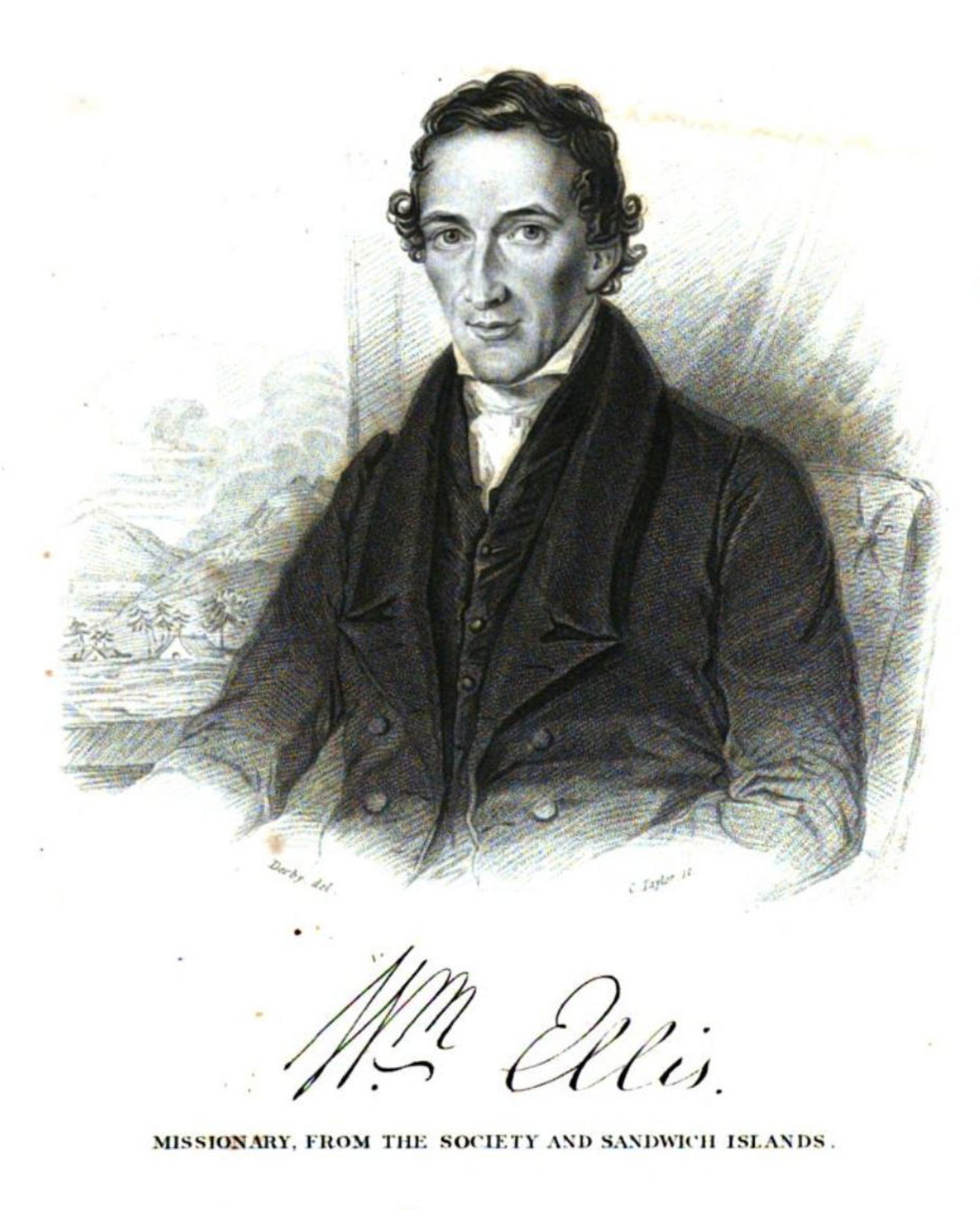

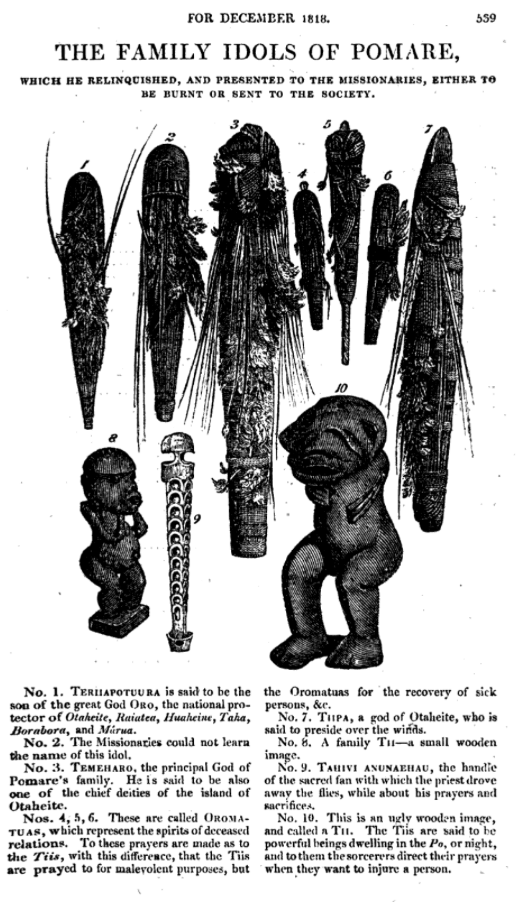

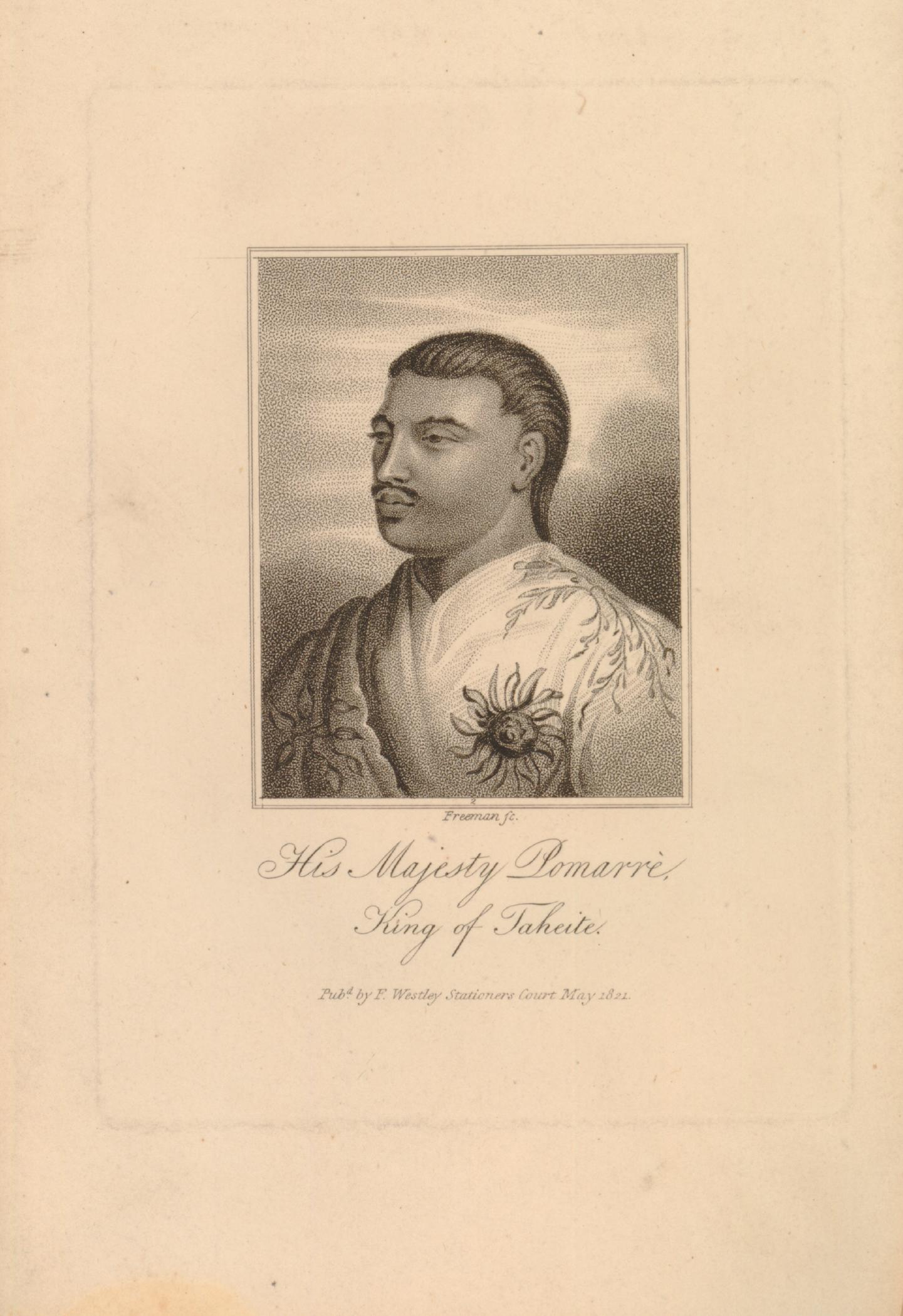
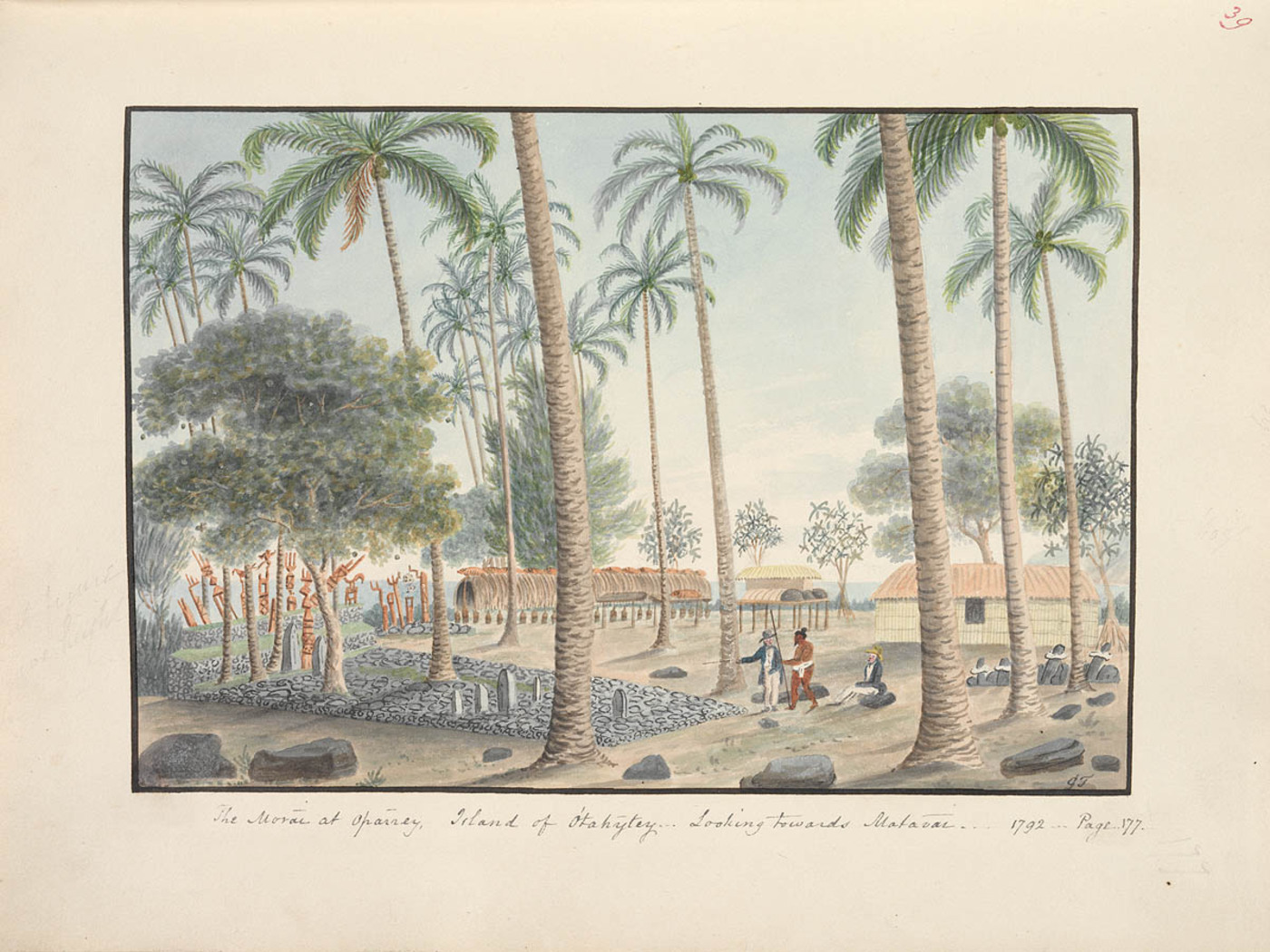


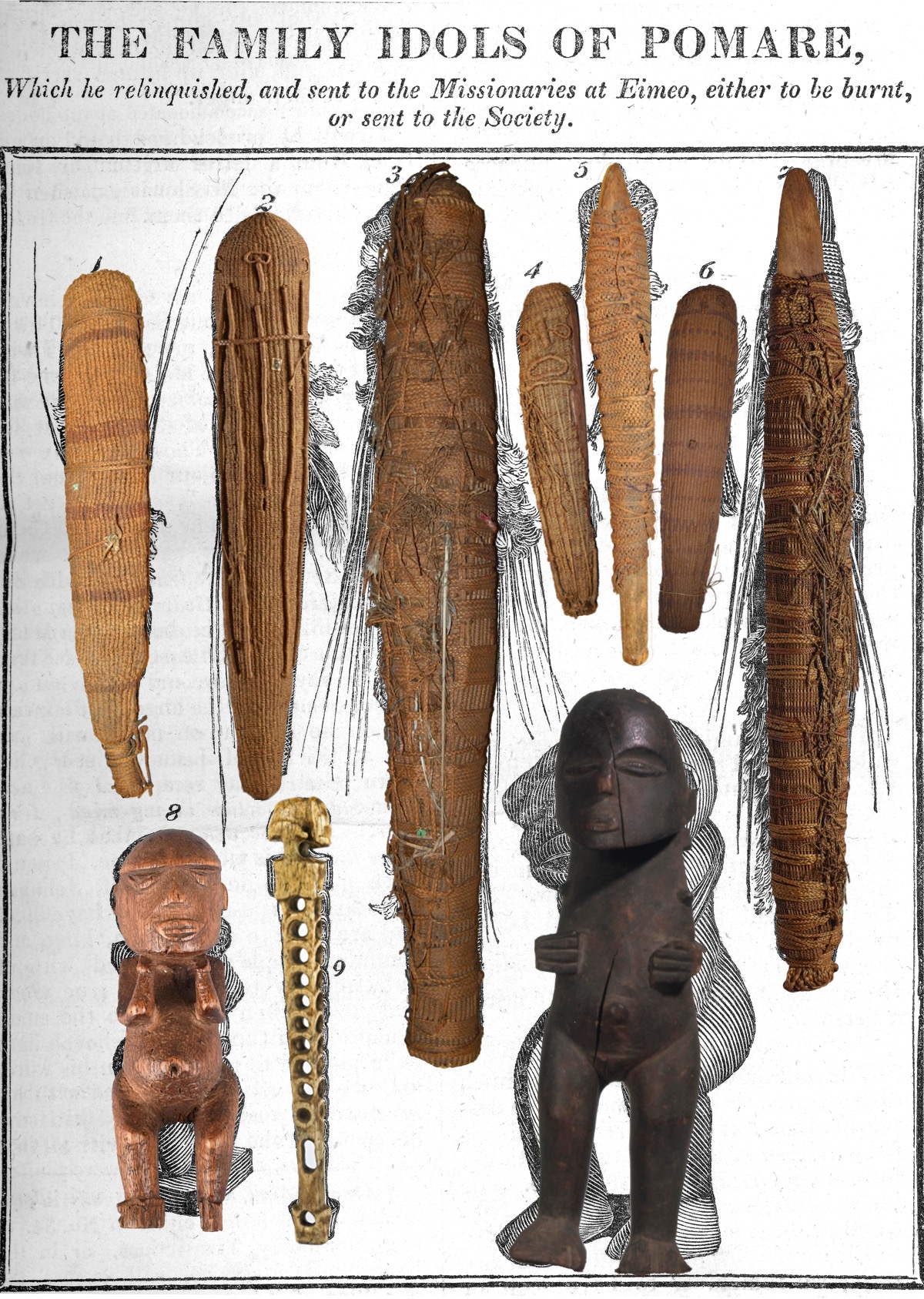

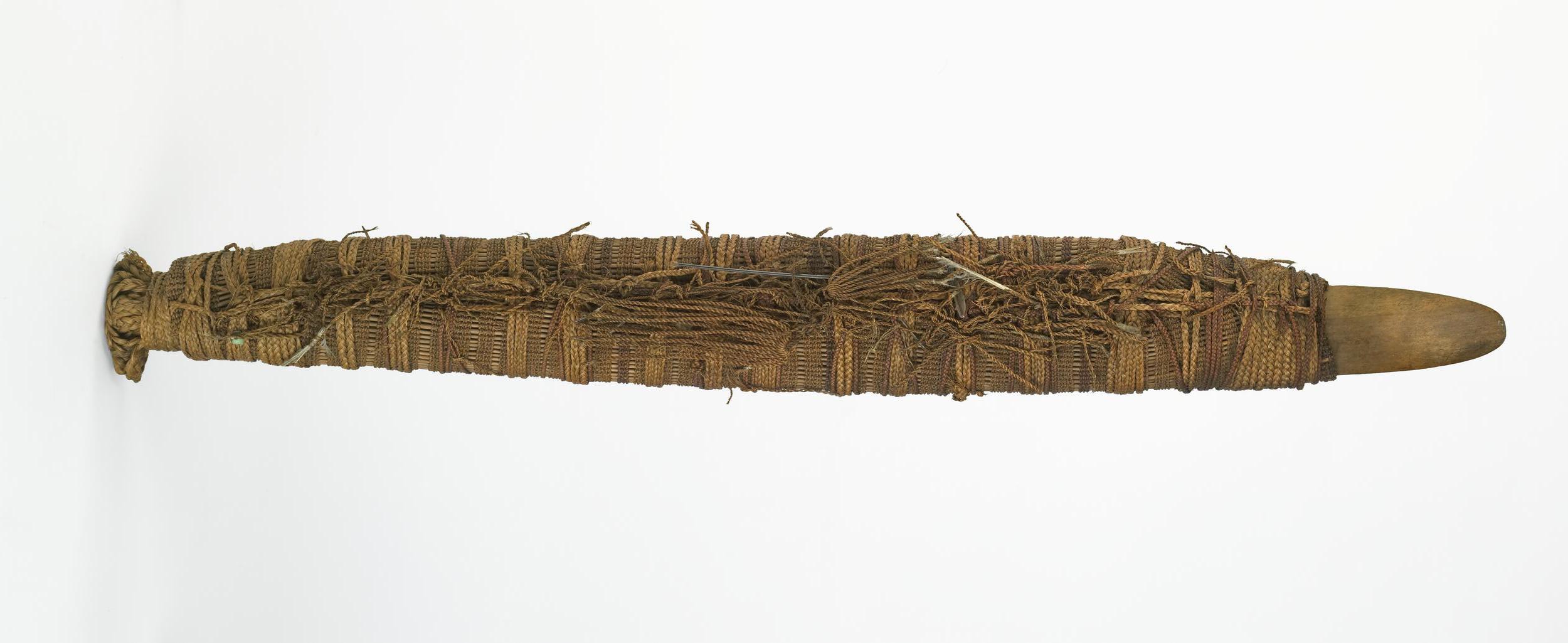
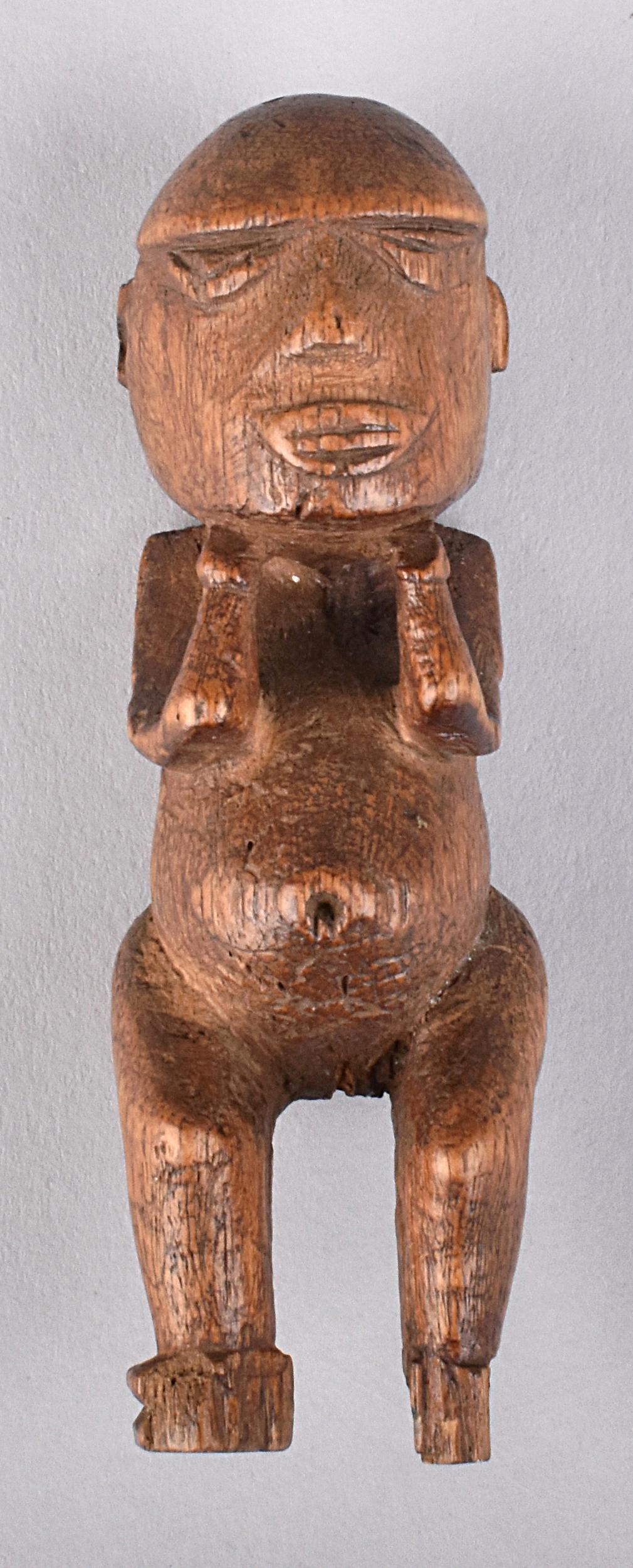
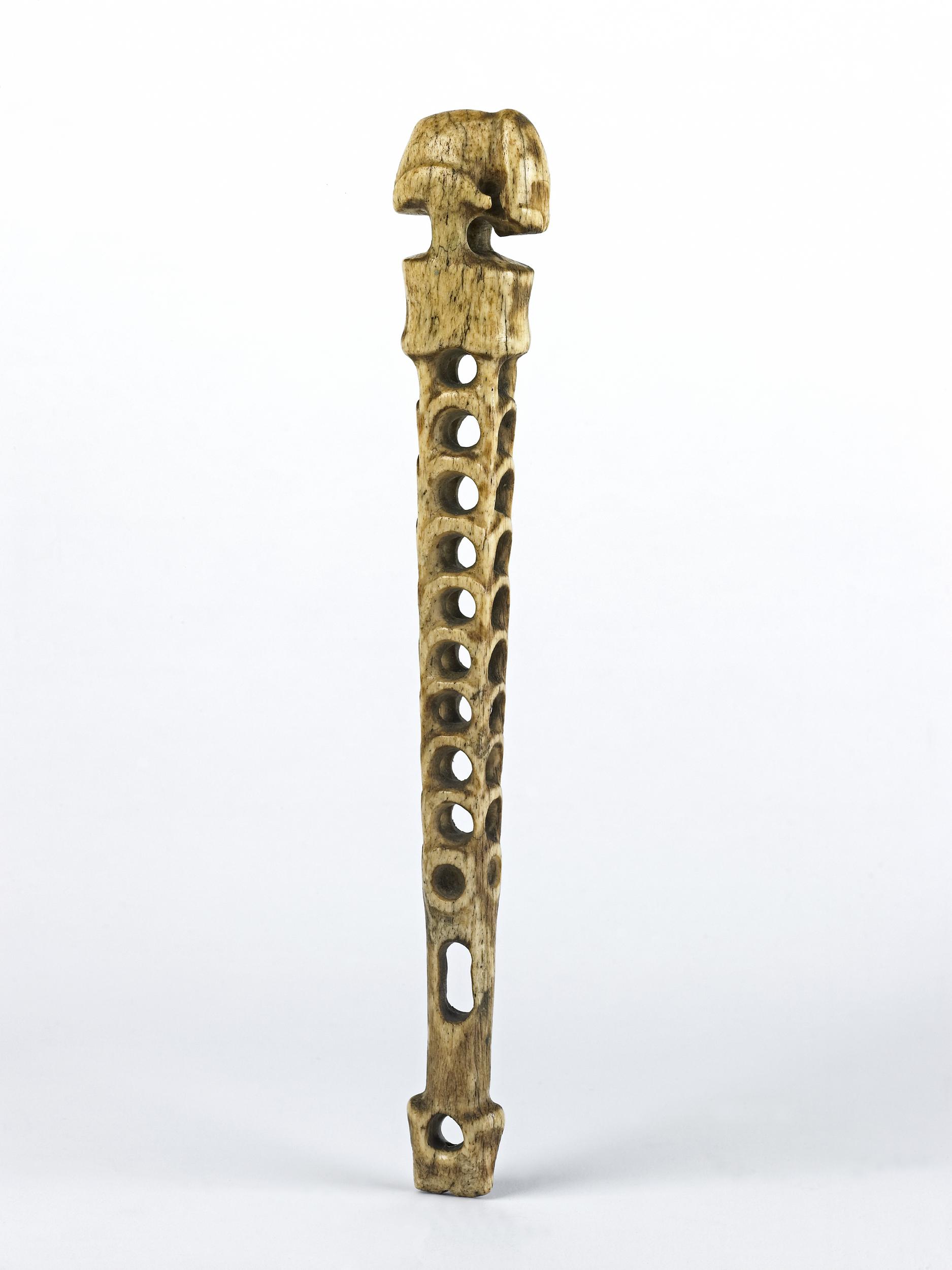

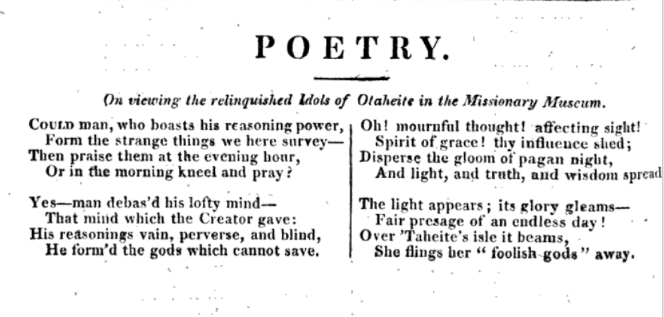
0 Comments